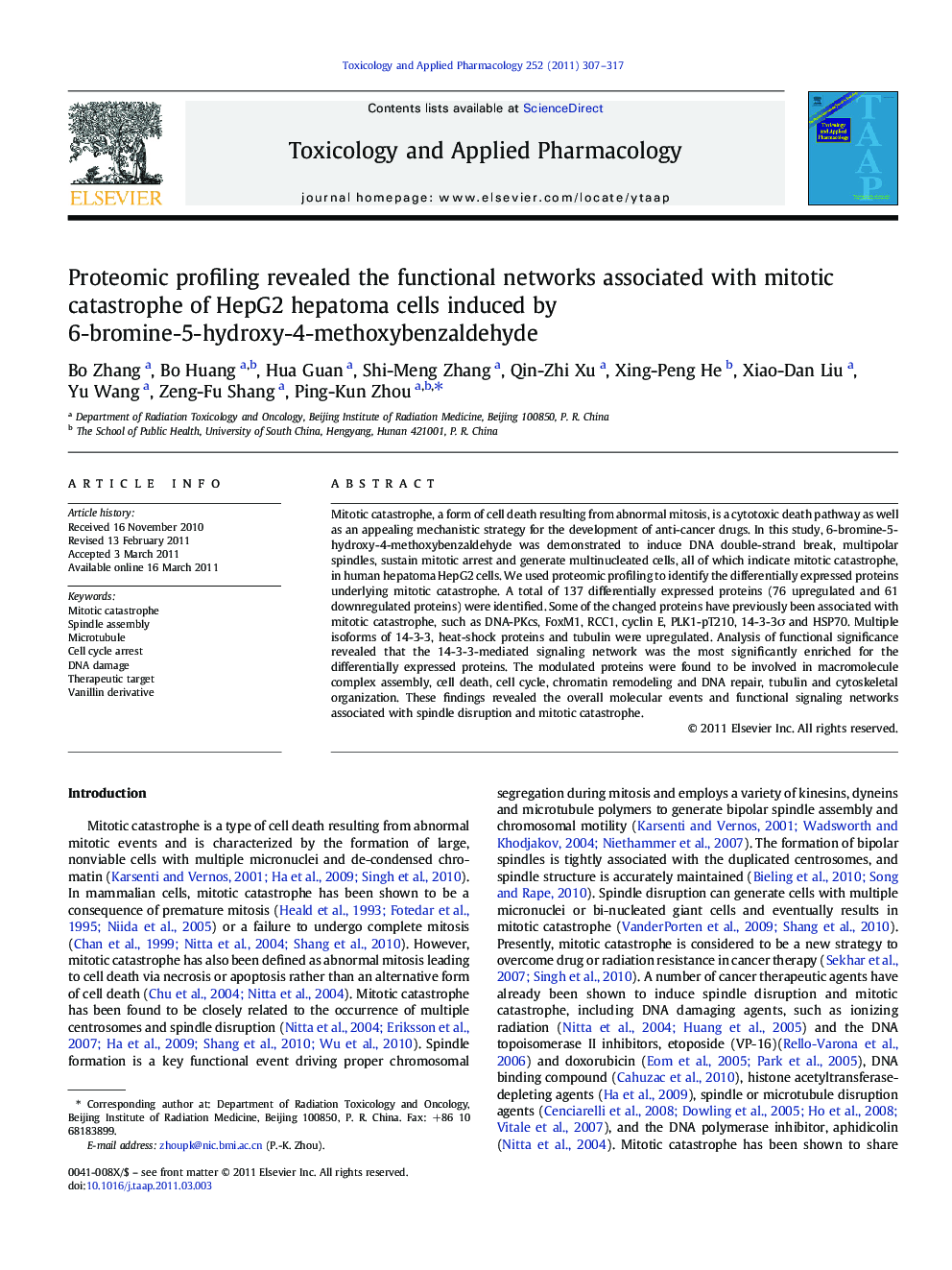| کد مقاله | کد نشریه | سال انتشار | مقاله انگلیسی | نسخه تمام متن |
|---|---|---|---|---|
| 2569538 | 1128535 | 2011 | 11 صفحه PDF | دانلود رایگان |

Mitotic catastrophe, a form of cell death resulting from abnormal mitosis, is a cytotoxic death pathway as well as an appealing mechanistic strategy for the development of anti-cancer drugs. In this study, 6-bromine-5-hydroxy-4-methoxybenzaldehyde was demonstrated to induce DNA double-strand break, multipolar spindles, sustain mitotic arrest and generate multinucleated cells, all of which indicate mitotic catastrophe, in human hepatoma HepG2 cells. We used proteomic profiling to identify the differentially expressed proteins underlying mitotic catastrophe. A total of 137 differentially expressed proteins (76 upregulated and 61 downregulated proteins) were identified. Some of the changed proteins have previously been associated with mitotic catastrophe, such as DNA-PKcs, FoxM1, RCC1, cyclin E, PLK1-pT210, 14-3-3σ and HSP70. Multiple isoforms of 14-3-3, heat-shock proteins and tubulin were upregulated. Analysis of functional significance revealed that the 14-3-3-mediated signaling network was the most significantly enriched for the differentially expressed proteins. The modulated proteins were found to be involved in macromolecule complex assembly, cell death, cell cycle, chromatin remodeling and DNA repair, tubulin and cytoskeletal organization. These findings revealed the overall molecular events and functional signaling networks associated with spindle disruption and mitotic catastrophe.
Figure optionsDownload high-quality image (92 K)Download as PowerPoint slideResearch highlights
► 6-bromoisovanillin induced spindle disruption and sustained mitotic arrest, consequently resulted in mitotic catastrophe.
► Proteomic profiling identified 137 differentially expressed proteins associated mitotic catastrophe.
► The 14-3-3-mediated signaling network was the most significantly enriched for the altered proteins.
► The macromolecule complex assembly, cell cycle, chromatin remodeling and DNA repair, tubulin organization were also shown involved in mitotic catastrophe.
Journal: Toxicology and Applied Pharmacology - Volume 252, Issue 3, 1 May 2011, Pages 307–317